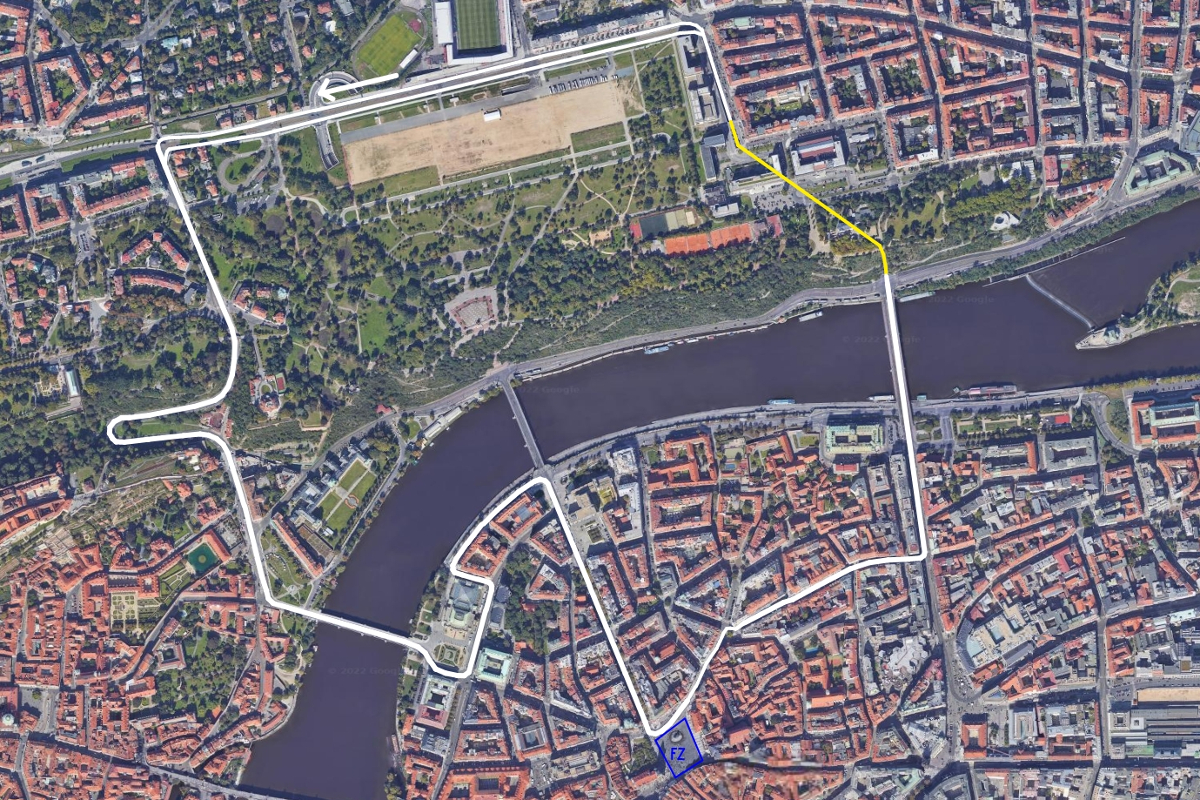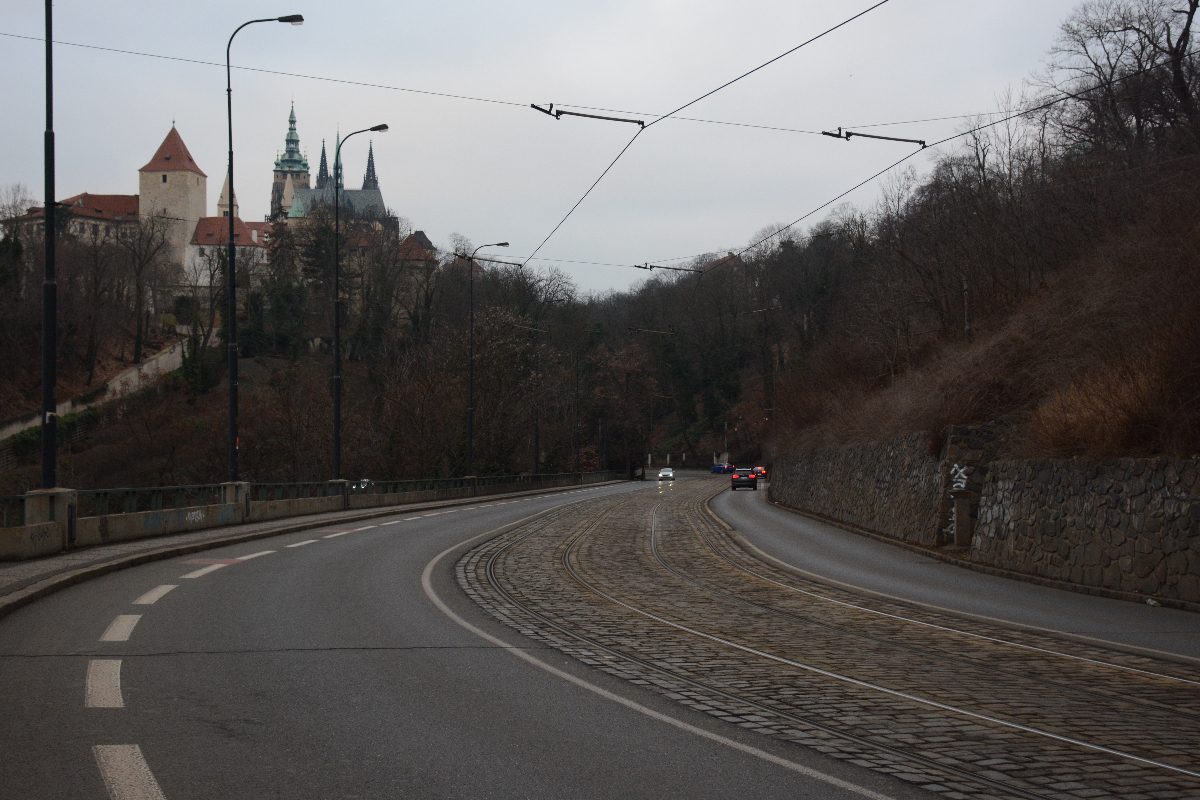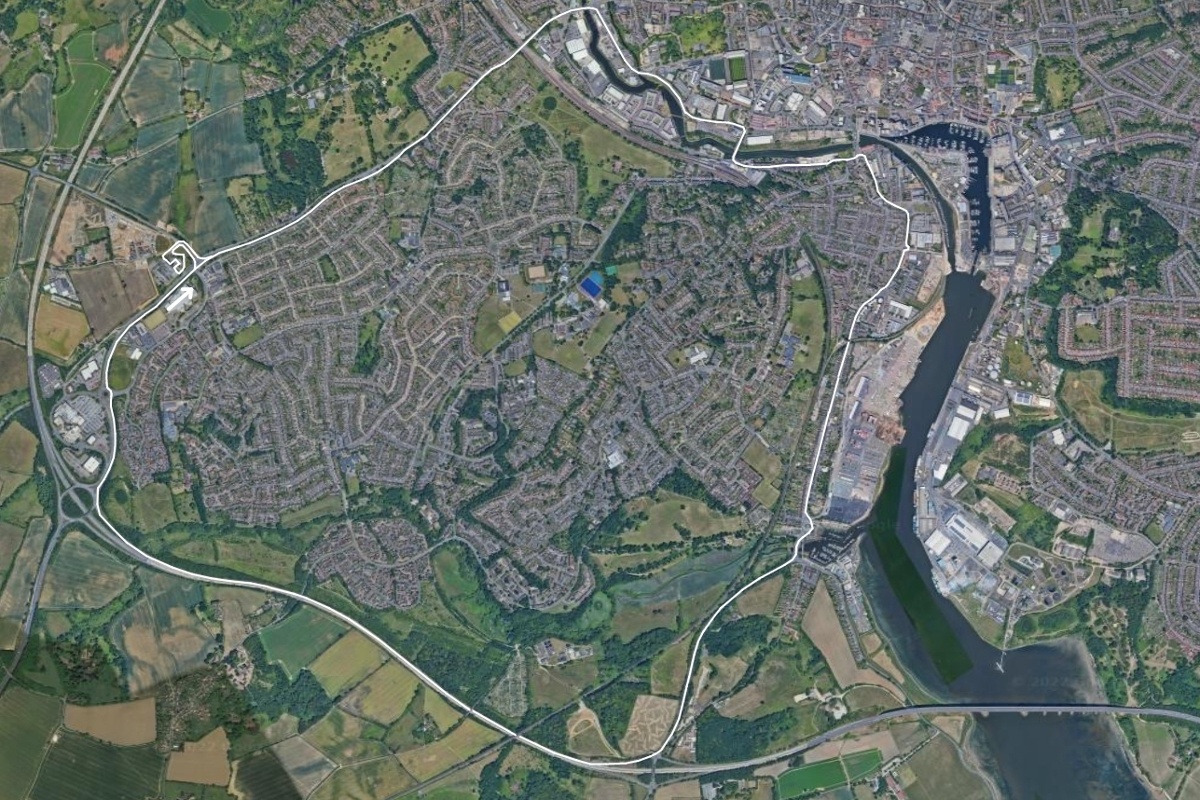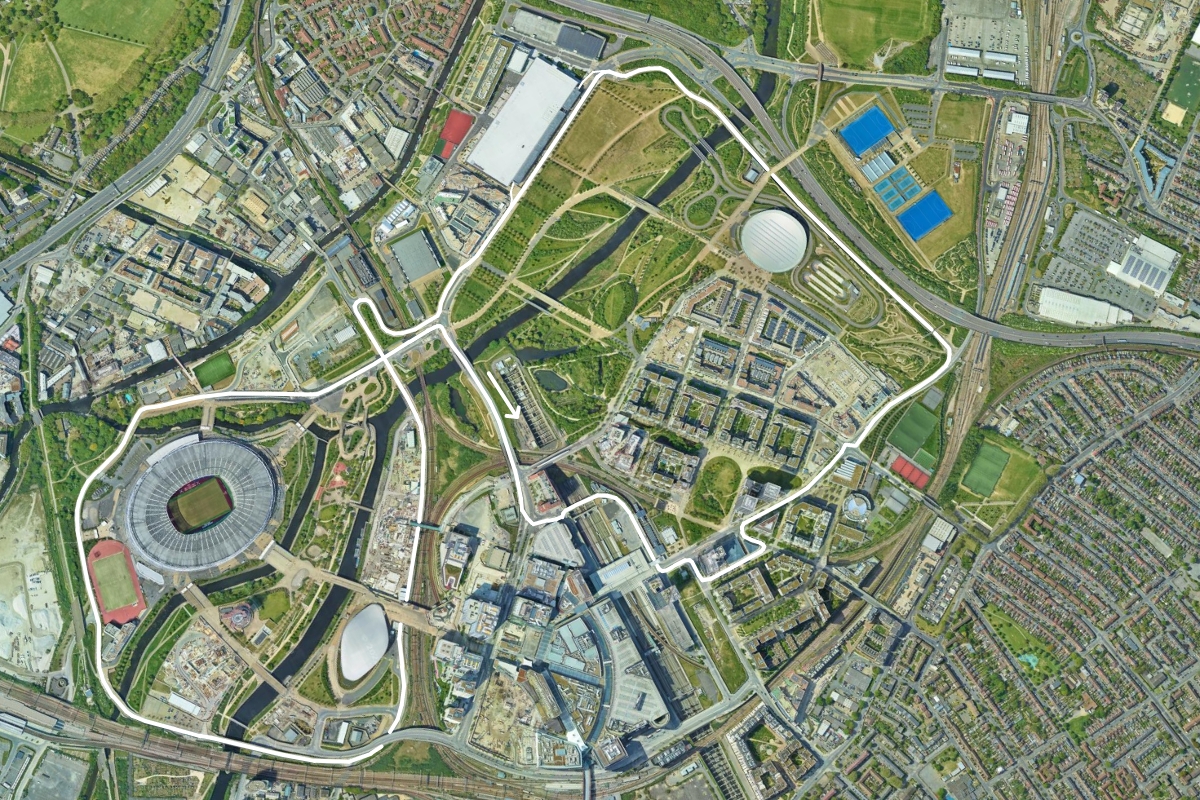
Photo: Red Bull Content Pool
Ahead of the Formula E season opener, we spent time thinking about which streets we would like to see motorsport on in the future. Some bold designs were the result, and explained in this week’s podcast
Inspired by the efforts of a group of journalists looking for the street-based future of the British Grand Prix in the year that Formula 1 last added two temporary circuits to its calendar, Formula Scout’s newsroom last week was pondering just how ambitious street circuits could now get given the type of venues that F1 is now heading to and Formula E is leaving.
Saudi Arabia has the high-speed Riyadh track that wraps itself around a historic forted area and is where FE will begin its season this weekend, while in Jeddah there is an even faster circuit that claims the title of being the quickest street circuit in the world despite the roads it uses being built specifically for hosting F1 rather than routes for people to go from A to B.
Then there is Miami Gardens, which joins F1 this year with a circuit using perimeter roads and car park space around the Hard Rock Stadium, and Prema’s Formula Regional team manager Ralf Aron is a three-time winner of Lithuania’s Palanga 1000km, an annual endurance race held for GT cars on sections of a highway and its sliproads.
In our latest podcast we pitched our own fantasy street circuit plans, and how they could be achieved (with a pinch of salt). You can hear it below or on Breaker, Google Podcasts, Overcast, Pocket Casts, RadioPublic, Castbox, Apple Podcasts and Spotify, and you can also read about our track designs and justifications. Remember, we’re journalists and not track designers!
Prague City circuit (5.60km)
 The Prague City Circuit comprises two bridges, a tunnel, some decent straights, 17 corners, excellent viewing for spectators and some of the city’s fabulous backdrops. It’s 500 metres shorter than Macau, and the two venues would share a similar blend of tight corners and fast straights.
The Prague City Circuit comprises two bridges, a tunnel, some decent straights, 17 corners, excellent viewing for spectators and some of the city’s fabulous backdrops. It’s 500 metres shorter than Macau, and the two venues would share a similar blend of tight corners and fast straights.
The Czech Republic has a long tradition of racing on public roads dating back to the pre-war grands prix just outside second-city Brno, and a shortened version of the classic layout was in the European Touring Car Championship until 1986.
There have been a number of street circuits in and around Prague, though mainly used for motorcycles. But one running around the huge Strahov stadium on a hill overlooking the city did host international Formula 3 races in 1965 and ’66 for drivers from Central and Eastern Europe.
Czech businessman, former racing driver and eponymous F3 team boss Antonin Charouz has twice put forward ambitious plans for a circuit in Prague. Herman Tilke had apparently been consulted and the then Prague mayor supported the idea.
Charouz aimed to stage an A1GP or DTM race first, with the ultimate ambition of putting on a F1 grand prix, although neither project saw the light of day. During FE’s Gen2 era there has been discussions about Prague, but these also came to nothing as the city could not reach an agreement with potential commercial partners.
And Last year, Red Bull Racing staged a run across the 14th century Charles Bridge as part of a promotional film with David Coulthard driving an RB7. That location is sadly absent from our chosen route – the difficulties in closing one of the city’s main tourist sights allied to the narrowness and the masonry making it unpracticable.
The start and finish of our track is located in Letna to the north of the city centre. A kilometre-long straight leads past the Sparta Prague football stadium. The track is at its widest here, although the tram lines in the middle would need to be covered for the event. This section was used for annual military parades during communist rule, so if it can handle tanks and rocket launchers it should be up to a full field of single-seaters.

Photo: Roger Gascoigne
The Letna park across from the stadium allows plenty of space for the pit and paddock as well as the main grandstands.
A 90° left hander leads back towards the river, before a fast sweeping section plunges down to a hairpin left hander, Chotkova Gardens, which is likely to prove quite spectacular. Based on data from one particular sim in-car lap of a racing game’s own Prague track posted online, an F1 car might be taking this hairpin at 93mph in third gear.
The cars then down to the river and the first of the bridges across the Vltava, the Manes Bridge, could be taken at over 186mph in the simulated world. A left-hander goes around the Rudolfinum concert hall, before cars flick left and right to run briefly alongside the river, providing excellent photo opportunities with the Prague Castle in the background.
Another 90° right-hander, to be named after the Czech racing heroine, Eliska Junkova, leads onto the luxury shopping street Parizska (the equivalent of London’s Bond St or Via del Corso in Rome).
At the end of the 800m long straight cars emerge into the Old Town Square, taking a tight left turn, to be named after the martyred Jan Hus whose statue overlooks the course at this point, and continue into Dlouha Street. The Old Town Square will again provide excellent spectating opportunities, as well as being the location for the Fan Zone and VIP area.
Dlouha will be the narrowest and slowest section of the track, including a chicane around a small square before the cars file past the shops and restaurants with virtually no chance to overtake.
Once they turn left after that it’s a blast back north and over the river before disappearing into a tunnel, a la Monaco. This one is super challenging as it sweeps left and then right for several hundred metres uphill. If the approaching speeds prove too high, a chicane could be added before the entry to the tunnel itself.
When back outside, the cars quickly come to the last corner and a completed lap.
The circuit is undoubtedly a challenging mix of fast and slow with plenty of elevation changes, some of the cobbled surfaces would be particularly tricky, especially in the wet, and its length meant it is probably too long for FE, but would be ideal for F3, or perhaps as a crown jewel venue for the newly-created ACR Formula 4 series. Roger Gascoigne.
Ipswich Street Circuit feat. The A14 (12.07km)
 Elevation changes, roundabouts, several bridges and even driving the wrong way up a main road, the Ipswich Street Circuit featuring The A14 is designed to take away the title of the fastest street track from Saudi’s Jeddah Corniche Circuit and hand it over to glamourous Ipswich.
Elevation changes, roundabouts, several bridges and even driving the wrong way up a main road, the Ipswich Street Circuit featuring The A14 is designed to take away the title of the fastest street track from Saudi’s Jeddah Corniche Circuit and hand it over to glamourous Ipswich.
It’s a whopping 12.07km and encapsulates the essence of the likes of the Nurburgring Nordschleife, Targa Florio’s Piccolo Circuit, the old Spa-Francorchamps layout and the Valencia Street Circuit. Some of those are legendary, one perhaps less so.
This idea is completely unrealistic, unnecessary and, frankly, probably a bit stupid. But it’s always fun to design a track around your old hometown. So that is exactly what formed the basis of this circuit. It can’t be denied that it looks fun, fearsome and quick! It feels like it wouldn’t feel out of place in some racing games such as the Burnout or Need For Speed franchises.
Suffolk itself doesn’t boast too much of a motorsport pedigree in recent years, instead neighbouring Norfolk largely holds that advantage. It is, however, where the likes of Porsche ace Josh Webster and former British F3 racer-turned Veloce Racing boss Rupert Svendsen-Cook are from, as well as highly regarded commentator Alex Jacques and even myself. Williams Racing’s Alex Albon also grew up in the county.
Not taking any inspiration from any Ed Sheeran songs, the Ipswich track starts near the Holiday Inn paddock (right next to the hotel, conveniently) and opposite the Sixth Form building which can be used as a media centre among other things, there is an outrageously long, not quite straight run down to the first proper corner, known as Handford Right-Hander. Fans at Chantry Park will get a cracking view of it all playing out. It tightens up before the downhill kink for good measure, and the braking is done over a bridge into a deceptively tight right-hander.
The sweepers at West End, Portman’s Walk and Sir Bobby Robson Corner then follow, before a technical section that features another bridge and the train station (Princes Corner and Station Turn). This is already evidently becoming a logistical nightmare as it will totally close Ipswich down to anyone coming in from outside, in addition to closing off some of the most important roads linking to the town, but whatever.
The circuit continues along the waterfront through Burrell and onto Vermon Street near my old local before heading along the Maidenhall section (yeah, we’re going to have to flatten some roundabouts), before another bridge-tight corner complex that massively tightens up. From there, it’s single-file as the drivers pick up speed, pass by Model Car Racing Club and the Suffolk Ski Centre and then join the A14, entering the wrong way. We’ll call that one A14 Entry.
Some barriers may need to be moved so we get some epic three/four-wide action along this next section, which will have to sort itself out by the time it gets to the next junction. Instead of turning off onto the A12 or carrying on, the drivers will exit the wrong way (again, at what we’ll just call A14 Exit) and back towards the Copdock area of the town.
From there, the final corner to negotiate will be the affectionately referred to Big TESCO Roundabout Corner, before heading back onto the stupidly long main straight, which isn’t quite straight. Craig Woollard.
Queen Elizabeth Olympic Park circuit (6.43km)
 Olympic parks are just natural homes for racing. They’re designed to be multi-sport venues capable of hosting more than 100,000 people at once and with road links to move a lot of people and equipment in and out during competitions. F1 has raced at Barcelona, Buenos Aires, Mexico City, Rio de Janeiro and Sochi’s Olympic parks, FE began at Beijing Olympic Green and is headed to Seoul’s Olpark, the Australian Supercars season finished spectacularly in Sydney for eight years, and perhaps most incredibly of all NASCAR held street races at Los Angeles’ Exposition Park and the DTM held non-championship rounds in Munich’s Olympiastadion twice before the series resisted the race organiser’s plans to turn it into a points-paying event and so it dropped off the calendar in 2013.
Olympic parks are just natural homes for racing. They’re designed to be multi-sport venues capable of hosting more than 100,000 people at once and with road links to move a lot of people and equipment in and out during competitions. F1 has raced at Barcelona, Buenos Aires, Mexico City, Rio de Janeiro and Sochi’s Olympic parks, FE began at Beijing Olympic Green and is headed to Seoul’s Olpark, the Australian Supercars season finished spectacularly in Sydney for eight years, and perhaps most incredibly of all NASCAR held street races at Los Angeles’ Exposition Park and the DTM held non-championship rounds in Munich’s Olympiastadion twice before the series resisted the race organiser’s plans to turn it into a points-paying event and so it dropped off the calendar in 2013.
There are Olympic parks within a comfortable walking distance of F1’s famous AVUS, Melbourne and Singapore tracks too, so it’s a surprise that London hasn’t joined the list of cities to combine their Olympic and racing histories.
Except it kind of has. Wembley was where the 1948 summer Olympiad was held and also where the 2007 and ’08 editions of the Race of Champions took place. Then in 2015, the London Stadium that had been the centrepoint of the Olympics three years prior got to host the RoC. But far more interesting is the roads around what is now primarily a football stadium.
There is a southern and northern loop to the Olympic park, part of a huge urban regeneration project which now has what is set to become the busiest train station in Britain. The focus of London’s bid to host the 2012 games was ‘legacy’, and the extended use of the sports venues located in this section of East London is just a small part of that. Turning the whole park into one of the most exciting street circuits in the world would be a great final tick box a decade on. There are high-speed esses similar to Jeddah’s, elevation changes like Monaco’s and an iconic backdrop around much of the lap.
Going for realism, the pitlane would be at the top of the north loop where there is an industrial building with pre-built garages that open onto the road, but the start-finish line would be situated on a wider straight at the bottom of the loop. The first sector from there is narrow in parts and would definitely need resurfacing, but having a low-speed start to the lap will allow the tyres to cool down before and after the high-load corners of the southern loop that make up sector three.
The biggest stumbling block to this race, besides the chances of West Ham wanting to play on the same weekend as we go racing, is the number of traffic islands proliferating the course and making it needlessly narrow in places. A fair bit of budget will go towards removing and then replacing them. Corners will be named after icons of London 2012 and David Moyes.
Longer than all but Spa when it comes to modern F1 tracks, maybe the QEOP circuit would be fun one to attract IndyCar to Europe with. Now that’s fanciful. Ida Wood
More on street racing
Leading by example? What do Jeddah antics mean for junior series?
Opinion: What Dan Ticktum will bring to FE
Podcast: Jake Dennis on the racing steps that founded his FE path
Curacao Grand Prix 1985: Revisiting the Caribbean F3000 adventure